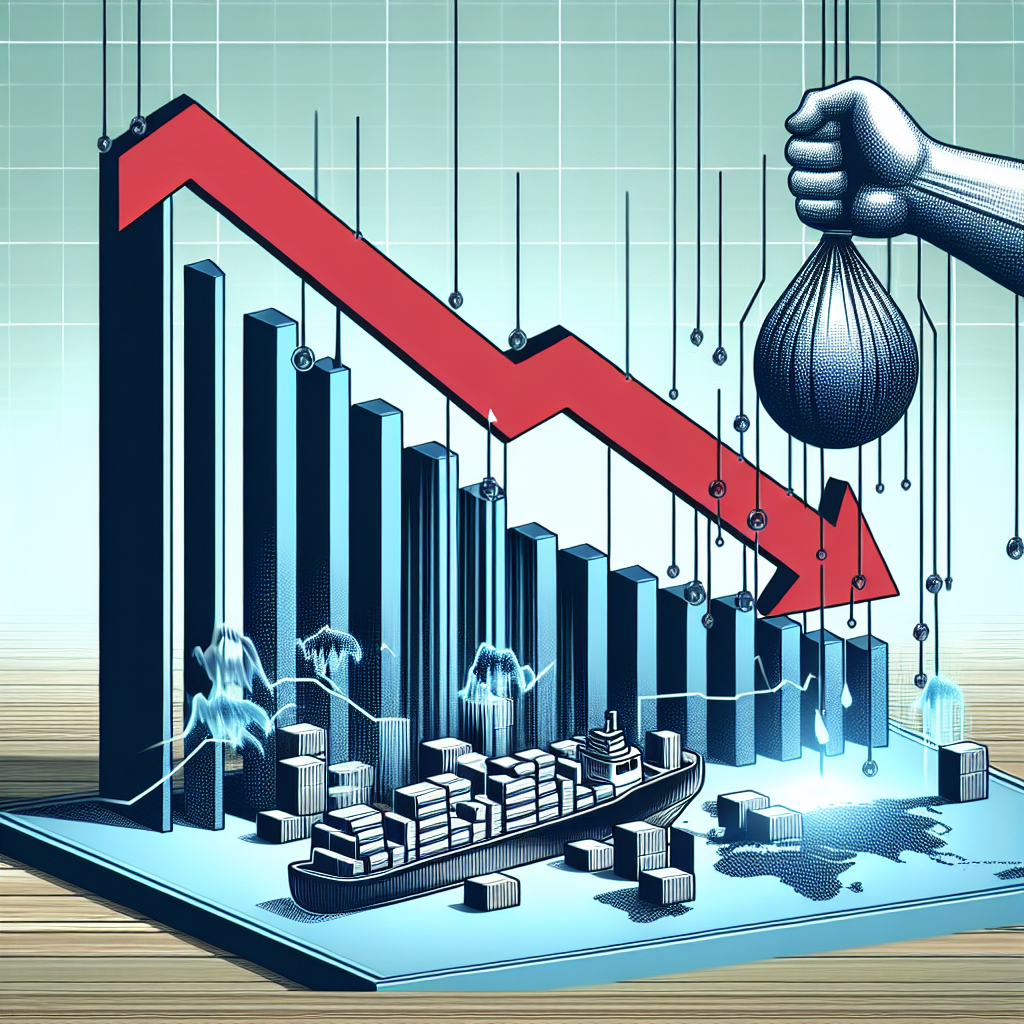Japan’s government announced on Wednesday (August 20th) that the country’s July exports experienced the largest drop in over four years, marking the third consecutive month of decline. This indicates that the ongoing US tariffs are putting pressure on Japanese manufacturers. However, despite the decrease in export value, the export volume increased by 1.2%, showing that exporters have been lowering prices to absorb the costs of US tariffs in order to maintain market share.
According to data released by the Japanese Ministry of Finance in a PDF document, Japan’s July exports dropped by 2.6% year-on-year, exceeding the market’s expectation of a 2.1% decline. This decline was primarily driven by the automotive sector, automotive parts, and steel, resulting in the largest decrease since February 2021. The overall trade deficit reached 117.5 billion yen, while the market had initially predicted a surplus of 196.2 billion yen for July.
Data reveals that Japan’s exports to the United States in July fell by 10.1%, marking the fourth consecutive monthly decline. Shipments of automobiles and parts to the US dropped significantly by 28.4% and 17.4% respectively, while exports of semiconductor manufacturing equipment decreased by 31.3%. Despite these decreases, the US remains Japan’s largest export market.
Exports to China decreased by 3.5%, marking the fifth consecutive monthly decline, while exports to the European Union dropped by 3.4% for the first time in three months. However, exports to Hong Kong saw a counter-trend increase of 17.7%.
Overall import value in July decreased by 7.5%, the first decline in two months, with a smaller decline than the market’s anticipated 10.4%. Import quantity, on the other hand, increased by 4.0%, marking the fifth consecutive month of growth.
Regarding exchange rates, the official average exchange rate for July was 145.56 yen to 1 US dollar, representing a 8.9% appreciation of the yen compared to the same period last year.
Since April, the US has imposed a 25% tariff on imported automobiles and parts, as well as a 10% tariff on most other goods. In June, steel tariffs were doubled to 50%.
The automotive industry is Japan’s largest export sector, and these measures have imposed significant pressure on it. To maintain shipment volumes, most Japanese auto manufacturers have opted to lower prices to absorb the additional costs. Economists anticipate that these costs may ultimately be passed on to American consumers.
Against this backdrop, the US and Japan reached an agreement on July 22-23, with the US agreeing to reduce automotive tariffs from the original 27.5% to 15%, as well as lowering tariffs on other goods to 15%.
However, the new tariff levels are still significantly higher than the original 2.5%, and the US has not yet announced a specific date for when the tariff reductions will take effect.
US Secretary of Commerce Howard Lutnick emphasized in an interview with CNBC that the formal documents necessary to record the US-Japan and US-South Korea trade agreements “will take several weeks to prepare,” but he indicated that the US has reached a “consensus” with Japan and South Korea on the agreements.
Following the loss of the ruling coalition in the July Upper House elections, Japanese Prime Minister Shinzo Abe is facing calls to step down. He has been criticized for not insisting on having the details of the US-Japan trade agreement finalized in a written document.
However, Abe stated that Japan’s decision not to insist on formalizing the agreement in writing is to avoid delaying the US tax reduction process.
Economic data shows that Japan’s GDP grew by 0.3% quarter-on-quarter and 1.2% year-on-year in the second quarter of this year, primarily driven by net exports.
The decline in July exports may exacerbate concerns about Japan’s economy. While Japan has managed to achieve some growth over the past five quarters, relying on exports despite weak domestic consumption, a further decline in exports could potentially lead to a recession.
The continued decline in exports may also prompt the Bank of Japan (BOJ) to maintain a cautious stance. It is widely expected that the BOJ will postpone raising interest rates at its policy meeting on September 19 to monitor the impact of tariffs on the overall economy.

